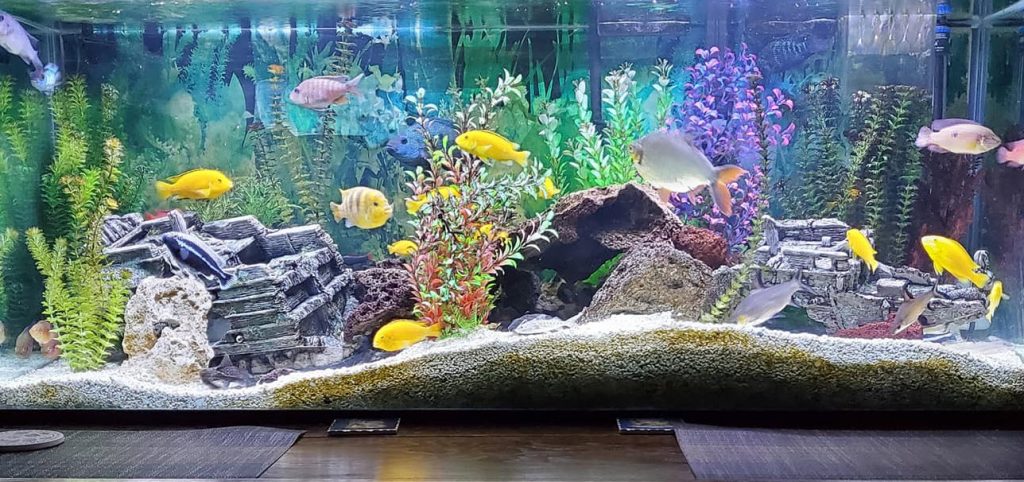
Hexamita is the common terminology used to describe many Hexamitidae Spironucleus species. Some use the term “internal parasites” to describe hexamita. There are hundreds of “internal parasites” of fish so we won’t use that terminology.
Hexamita is responsible for some portion of a whole series of symptoms including “white poop”, bloat, hollow belly, wasting disease, “not eating” and “spitting food back out”. Hexamita is falsely given credit for hole-in-the-head syndrome. All these symptoms are covered in other sections under the symptoms chapter.
This organism is a flagellated microbe which is a facultative anaerobe. It can reproduce and live in aerobic environments but it only thrives and becomes infectious to fish in anaerobic environments. For instance, hexamita is only found on the aerobic skin of fish by pathologists when the intestines of the fish are severely infected and putting out large numbers of hexamita into the water.
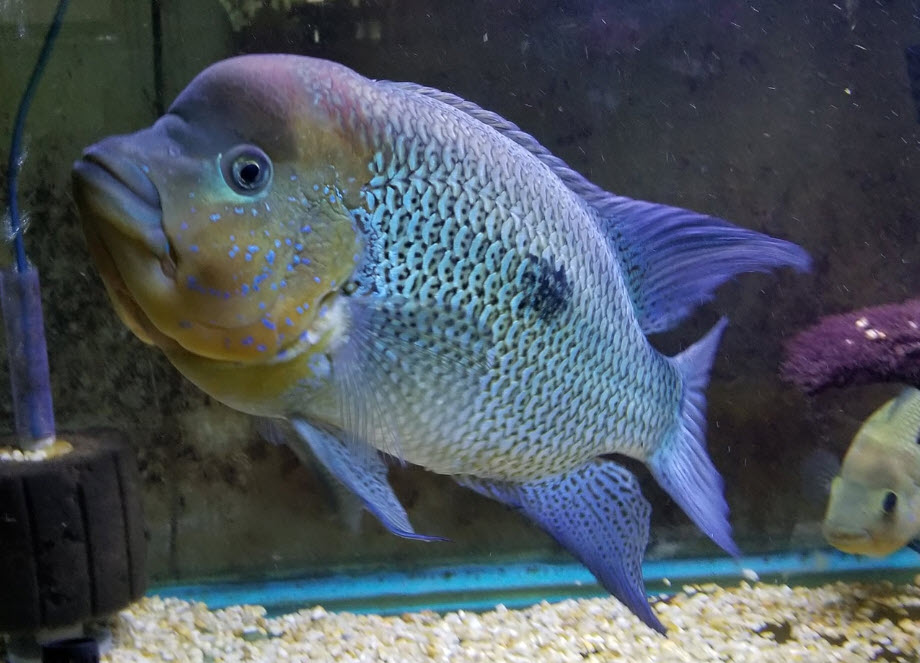
Per Diana Walstad (scientist and author of “The Ecology of the Planted Aquarium”) hexamita was found in most of the intestines of tropical fish from southeast Asia.
Per Bassler, 2008, p. 171:
“the parasite normally occurs in small numbers in the intestines of healthy fish”
Per Burgess, 1998, p.286:
“These weakly pathogenic parasites are commonly found in small numbers in the intestines of cichlids, where they do no harm under normal circumstances.”
So trying to eliminate hexamita from a tank is impossible. It is part of the normal fauna of the intestines of a fish. And you can’t sterilize the intestines of any fish.
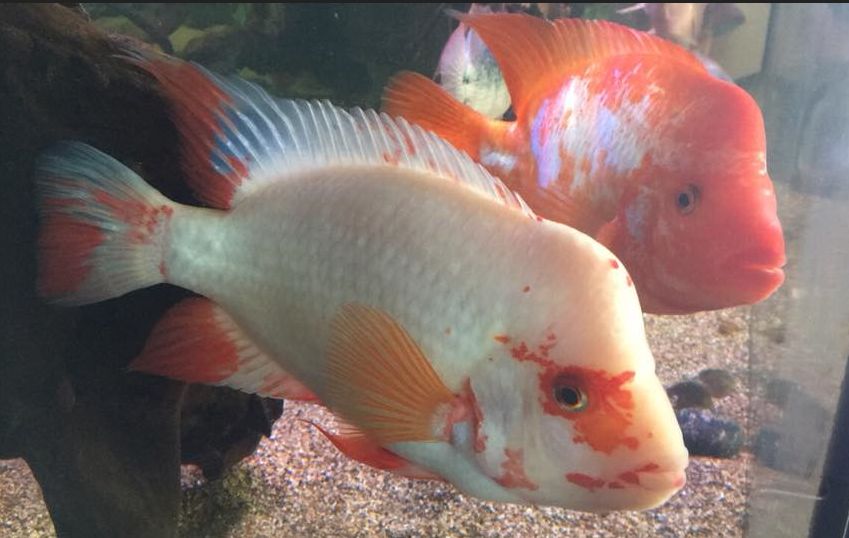
Symptoms of Hexamita
In the intestines hexamita can do several completely different things. First off it can cause the intestine to produce large quantities of white, yellow or clear mucous. This mucous will trail behind the fish in long strings, i.e. “stringy, white poop”. But note that “stringy white poop” is like diarrhea in dogs, it frequently occurs with no apparent reason.
Sometime hexamita interferes with the absorption of food from the intestines. The fish becomes hollow bellied. This mimics wasting disease caused by fish TB. Only microscope analysis of the feces can tell if it is hexamita.
Alternatively, hexamita can cause the intestine to close and back up into the stomach. The fish stops eating and starts spitting their food out. The stomach and the intestine enlarge. And bloat ensues. Other organs can then become involved such as the gall bladder and spleen.
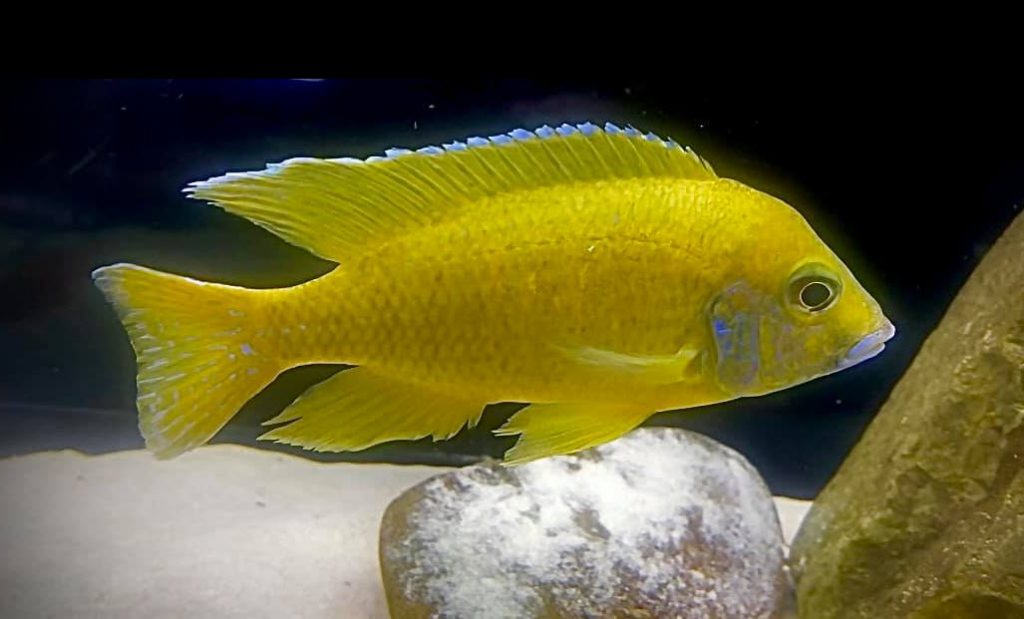
Treating Hexamita
Treat hexamita with metronidazole (SeaChem MetroPlex, API General Cure, Hikari Metro Plus food or New Life Spectrum Hex-Shield food) ONLY IN THE FOOD. Note the FDA stopped the production of two part fish medications during the COVID epidemic for reasons I can’t fathom. Thus it has become impossible to get the popular API General Cure (metronidazole and praziquantel).
It is easy to make medicated food. Heat 1/4 cup water (two ounces or 58 milliliters, not a lot) in the microwave. Then blend seven grams of plain animal derived gelatin (Knox gelatin, one packet) into the hot solution with vigorous stirring. Take two tablespoons of dry commercial fish food (pellets or flake) and mix it with just a little of the hot water/ gelatin mixture. Add hot water/gelatin until you get a paste like consistency. If it gets too watery just add more food. To get gel food to float simply mix in a little whipped cream at this point.
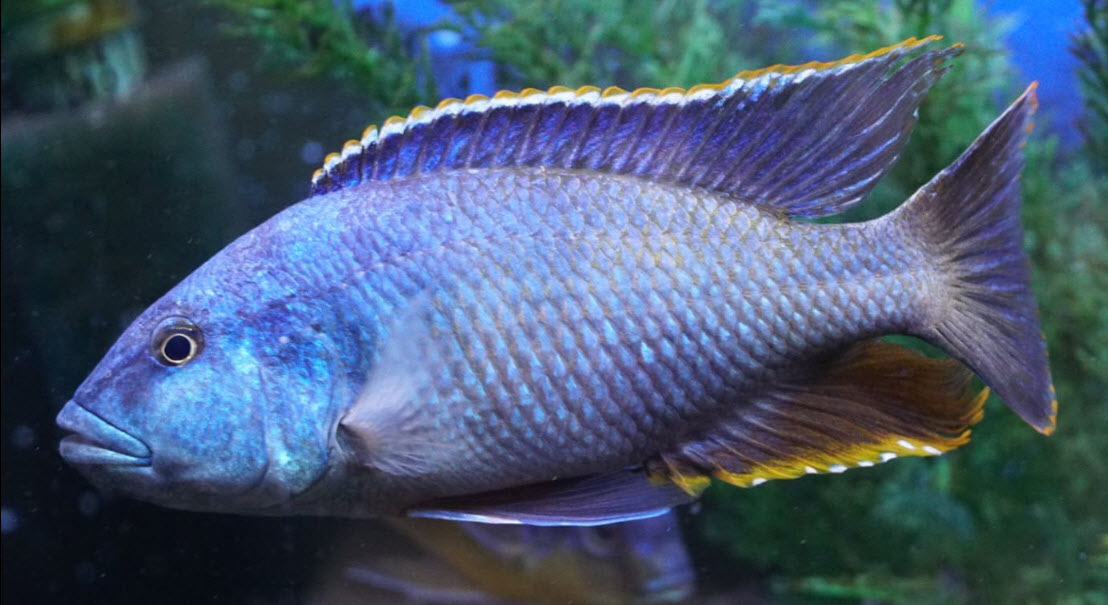
Then add just a “smidgen” (roughly 1/16 teaspoon, a 1% to 2% addition) of medication to the mud. If you are using more than one medication mix the medications together, then use just a “smidgen” of the mixture. If you are using a packet of medication, take just a “smidgen” of the packet contents.
Mix and mash the whole mass thoroughly. Spread it out into a pancake about 1/8th inch (3 mm) thick on a plastic film or a plate. Then put in the refrigerator. If you plan on keeping it for more than two weeks put it in a small plastic bag and freeze.
Hexamita needs to be treated with medicated food every day for at least ten days.
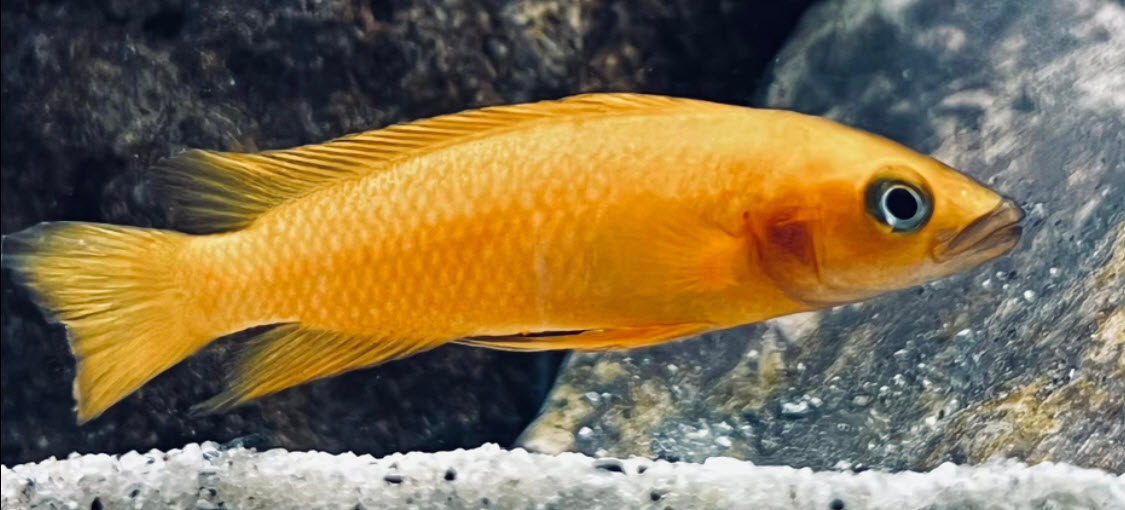
If the fish stop eating things get a little dicey. If fish haven’t eaten in a week or so one can take drastic action. Do the following:
- Make up a solution of one fourth teaspoon Metroplex in four tablespoons of water.
- Enlist the help of another person
- Net the fish out of the tank one by one into a wet towel.
- With the other person holding the fish pry open the mouth of the fish with a plastic 1 milliliter pipette filled with the medicine solution.
- Put the tip of the pipette deep into the throat of the fish and squirt one milliliter of the medicine solution into the fish.
- Release back into the tank
This is a drastic solution many are uncomfortable with, but if the fish aren’t eating they will start dying, not because of starvation but because of the pathogen inside them.
There is one alternative to the pipetting method. Take a flat container like a cake pan and fill it with tank water to a depth of roughly half the body height of the fish. Add the amount recommended for 10 gallons of water by the medication directions to the shallow water and mix well. Put the fish in the resulting soup for one minute and allow it to flop around and gasp. There is a good chance the fish will swallow significant quantities of medication during this bath routine.
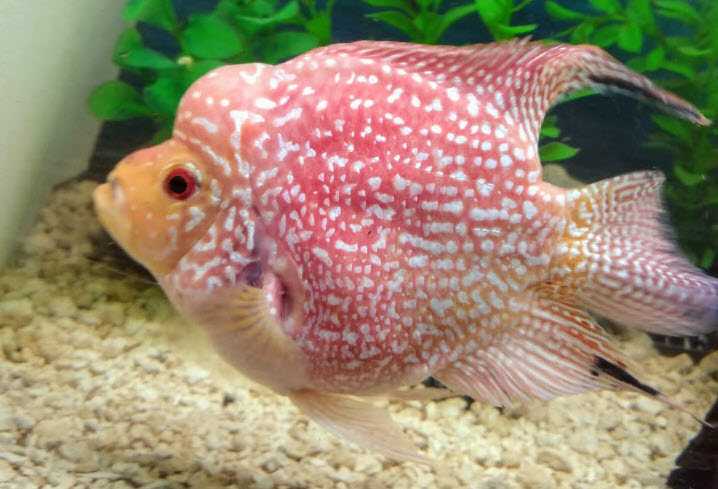
Alterantives
Metronidazole is the treatment of choice and give one the best chance of treating this. But hobbyists in Canada and Europe can’t get metronidazole. The only treatment which might have LIMITED success is Epsom salts (other wise known as magnesium sulfate or MgSO4). Epsom salts can be obtained in the foot treatment section of the drug store. Epsom salts are a strong laxative and will flush the hexamita out of the fish.
Treat with a smidgen of MgSO4 in the food if the fish is eating. If the fish isn’t eating you need to lightly treat the water, like 100 ppm. Epsom salts do not kill the hexamita. It simply evacuates maybe 90% to 99% of the hexamita into the water. The hexamita in the water column then pass through the filter where little carnivores eat most of the hexamita.
But there will still be lots of hexamita in the water column. But that is immaterial. The Epsom salts just lessens the numbers in the intestines to the point where the fish’s defenses can successfully take over (“hopefully”, the success rate here isn’t all that high). Even the metro can’t completely eliminate hexamita. Once hexamita is in a fish and in an aquarium, it will always be there. The key is too keep the hexamita numbers low by keeping the fish healthy. The only fish pathogens that can be truly eliminated from fish and aquariums are ich and nematodes.
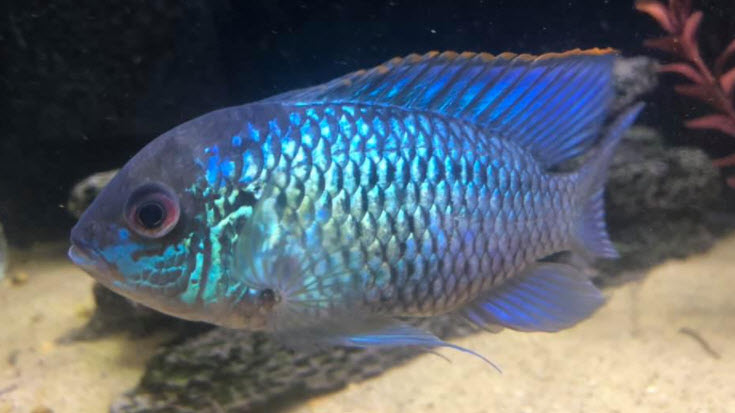
Adding Medication to the Water
Internal fish diseases such as hexamita can ONLY be treated with metronidazole in the food. Many believe (and the instructions on the metronidazole say!) that fish medications need to be added to the water. They are simply incorrect. This controversial topic is covered in the following link:
12.5. Fish Don’t Drink
There is one study on hexamita which is often quoted by social media “experts” as “proof” that metronidazole can be added to the water. This study had a rather glaring error. The study is: “A Comparison of Metronidazole Treatments for Hexamitiasis in Angelfish”, Whaley et. al. 1991: This study said:
“Findings also confirm that metronidazole, administered in food or in bath, is effective for removal of Hexamita from the intestinal tract of angelfish”.
This statement is an error. Someone just did not drink enough coffee that morning. The “control” (no metronidazole) for the bath experiment had the statistically same result as the bath with the metronidazole, ten and twelve not being statistically different numbers. So metronidazole put into the aquarium water had no effect on the hexamita organism. These are the results of the study:
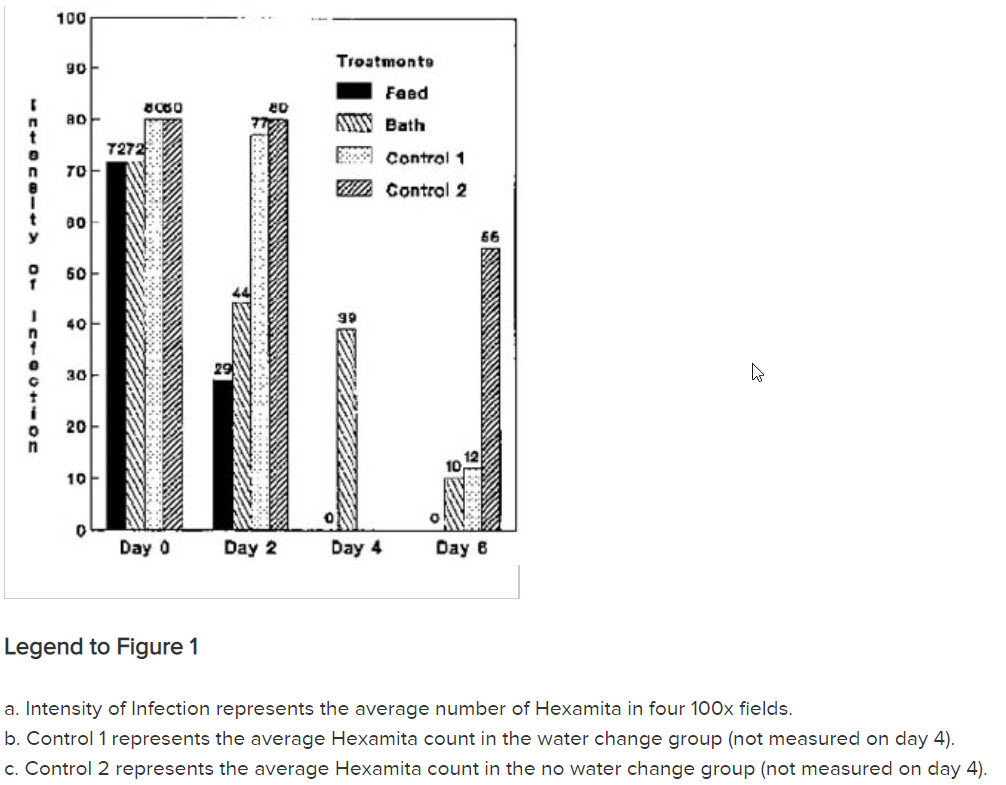
The “bath” treatment and its control (control 1) resulted in the same low level of infection (10 and 12) on the final day of the study. Whoops! Note this study has a central problem. The difference between the two control was only a 25% water change every other day. This should not have given the huge difference seen in the two control groups as the hexamita measured were in the intestines of the fish. This is problematic.
This study does rather conclusively confirm that metronidazole does indeed work and work well against hexamita when put in the food and ONLY in the food.
Metronidazole works by interfering with a metabolic pathway which is poisoned and shut down by oxygen. So metro’ does nothing in oxygenated water. And metronidazole is not absorbed by the gills of the fish nor is it ingested in large quantities as fish don’t drink. But using it in the water makes a whole lot of money for the manufacturers of the metronidazole.
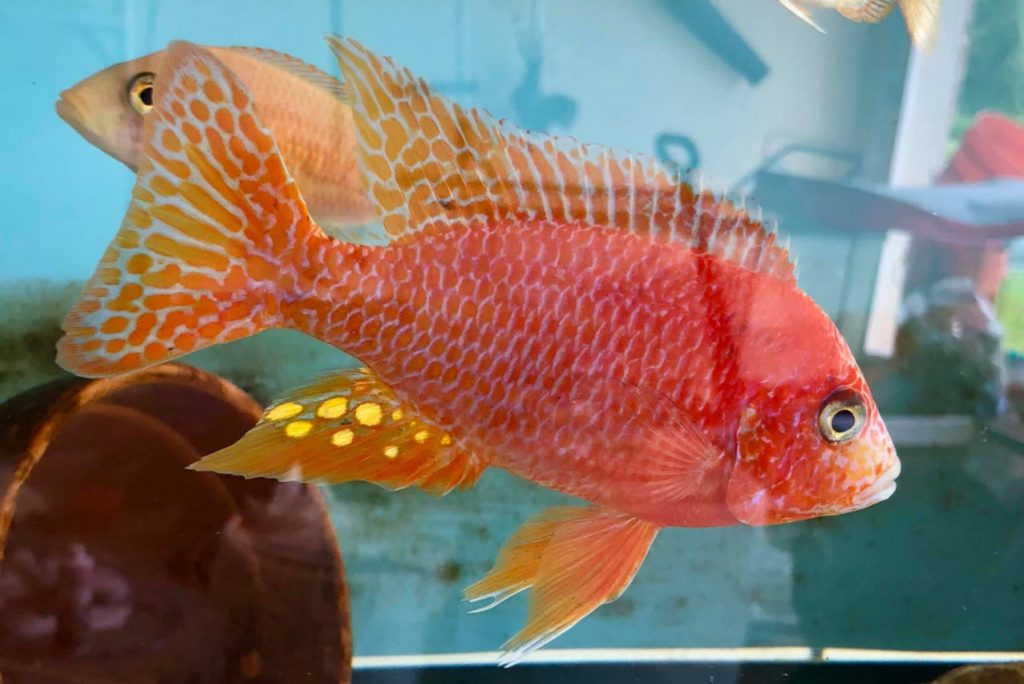
Hexamita and Hole-in-the-Head
Many use the term “Hexamita” as the term to describe Hole-in-the-head Syndrome. Hexamita categorically does not cause Hole-in-the-head directly. This is covered in this link:
11.1.1. Hexamita and Hole-in-the-head
.
Return to Diseases Menu
.
Aquarium Science Website
The chapters shown below or on the right side in maroon lead to close to 400 articles on all aspects of keeping a freshwater aquarium. These articles have NO links to profit making sites and are thus unbiased in their recommendations, unlike all the for-profit sites you will find with Google. Bookmark and browse!
.

Dave says
In Reply to Andy …… “not eating” needs to be treated with what is basically a shotgun approach with multiple medications. Treatment is difficult and typically involves pipetting or shallow baths. More about it can be found at the following article: http://aquariumscience.org/index.php/11-15-fish-not-eating/
Andy N says
Hi Dave,
Thanks for your hard work.
I would like to ask – would giving a short Epsom salt bath (100ppm in a quarantine tank) + pipetting metro solution into the stomach be an effective combo to treat a fish that is not eating?
I have used levamisole + praziquantel in water and 3% Epsom salt pipette recently but seen no improvement thus far.
Dave says
Jeremy r Metro is very stable in the refrigerator. Sounds to me like you have the “great imposter”, namely Fish TB. Try cleaning up the water with some more biofiltration and adding UV.
Jeremy r says
Hey Dave,
Keen to know, have you seen any decline in the efficacy of metro soaked food with your receipt within a short time period?
Eg if I make up enough metro food for 10 days of dosing and I keep two days in the fridge and the rest in the freezer, would that be stable?
I ask as Im having some serious treatment resistant spironucleus (at least that’s what I think it is).